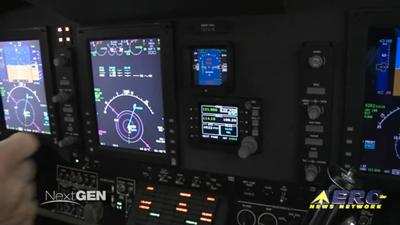Wed, Feb 22, 2017
Focuses On Adherence To Proper Test Procedures
The FAA has released a Safety Alert for Operators (SAFO) directed towards personnel involved with ground testing of aircraft Air Traffic Control (ATC) transponders and ADS-B OUT equipment. The SAFO points out the importance of adhering to proper test procedures and the hazards associated with improper testing.

The FAA has received reports of transponder and ADS-B OUT system ground test events in which information, including simulated altitude, was transmitted from the test aircraft and received by aircraft inflight. In at least one instance, an ADS-B OUT system ground test created a false airborne target that generated a Traffic Alert and Collision Avoidance System II (TCAS II) Resolution Advisory (RA) on a Boeing 737 aircraft on approach. Pilot reaction to this RA required unnecessary maneuvering in congested airspace and initiated ATC re-sequencing actions that affected multiple aircraft and negatively impacted operations in the area for about 30 minutes.
Transponders and ADS-B OUT systems operating under test conditions transmit specific information about the aircraft, including position and altitude data. These tests frequently involve a check of the aircraft’s altimetry system in which air pressure is induced into the pitot static system to simulate operation at various altitudes. In cases where transmission lines are not attached directly to test equipment, antenna shielding must be used to prevent propagation of test signals with potential to interfere with ATC operations or TCAS-equipped aircraft operating in the area.
The FAA recommends that repair stations and maintenance personnel performing transponder and ADS-B OUT system testing evaluate the adequacy of their procedures and adhere to proper test procedures to prevent uninhibited system transmission that may affect ATC operations or airborne aircraft. The FAA also recommends that applicable maintenance personnel be aware of any local requirements to alert ATC of impending testing, and to review relevant guidance contained in the latest revisions of:
AC 29-151, Airworthiness Approval of Traffic Alert and Collision Avoidance Systems (TCAS II), Versions 7.0 and 7.1 and Associated Mode S Transponders;
AC 43.6, Altitude Reporting Equipment and Transponder System Maintenance and Inspection Practices; and
AC 20-165, Airworthiness Approval of Automatic Dependent Surveillance - Broadcast OUT Systems.
(Source: FAA)
More News
Aero Linx: The American Society of Aerospace Medicine Specialists (ASAMS) The Society is a non-profit organization created to serve as a voice for and represent the professional ne>[...]
Class C Service This service provides, in addition to basic radar service, approved separation between IFR and VFR aircraft, and sequencing of VFR aircraft, and sequencing of VFR a>[...]
Have A Story That NEEDS To Be Featured On Aero-News? Here’s How To Submit A Story To Our Team Some of the greatest new stories ANN has ever covered have been submitted by our>[...]
Also: ERAU Uses UAVs, P550 Group 2 UAS, Starship’s Florida Launches, NASA Missions Chopped The Air Force has put out a call to commission a one-to-one copy of the Iranian-des>[...]
Classic Klyde Morris From 11.07.16 (and Remembering Bob...) FMI: www.klydemorris.com>[...]
 ANN's Daily Aero-Linx (08.27.25)
ANN's Daily Aero-Linx (08.27.25) ANN's Daily Aero-Term (08.27.25): Class C Service
ANN's Daily Aero-Term (08.27.25): Class C Service ANN FAQ: Submit a News Story!
ANN FAQ: Submit a News Story! Airborne-NextGen 08.26.25: Iran UAV Knockoffs, X-37B Spaceplane, Army Training
Airborne-NextGen 08.26.25: Iran UAV Knockoffs, X-37B Spaceplane, Army Training Classic Klyde Morris (08.25.25)
Classic Klyde Morris (08.25.25)



